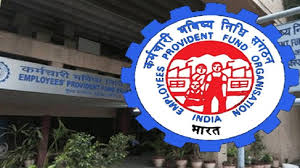Returns on debt funds and instruments like non-convertible debentures (NCDs) are showing signs of improvement. The US Federal Reserve raised rates by another 75 basis points last week, and the Reserve Bank of India is expected to act similarly. Should retail investors park their money in debt instruments and funds for the medium term, or should they wait for rates to peak?
Why has the debt outlook improved?
The rise in interest rates has brightened prospects for debt investments. Since April, the RBI has frontloaded monetary policy tightening, with a 190 basis point increase in the repo rate, 230 basis point increase in the floor policy rate (reverse repo and standing deposit facility) and reduction in the core liquidity surplus by around Rs 7 lakh crore.
The yield on the benchmark 10-year government bonds has gone up by 101 basis points to 7.34 per cent over the last year. The bond market is pricing for a terminal repo rate of 6.5 per cent as the RBI is expected to continue its war on inflation (which touched 7.4 per cent in September).
“We believe the peak of the central banks’ hawkishness is now behind us. It is time we spot emerging opportunities in the bond market. After the recent sell-off, bond valuations have improved. Currently, 3-5-year government bonds are trading at a yield of 7.30-7.45 per cent. This is more than 140 basis points above the repo rate of 5.9 per cent. The long-term average of this spread in a tightening interest rate environment is around 80-90 basis points,” Pankaj Pathak, Fund Manager-Fixed Income, Quantum Mutual Fund, said.
What options do investors have?
Several: NCDs, debt mutual funds, Treasury Bills, and government securities. Considering the duration-accrual balance, the 3-5-year segment remains the best bet as core portfolio allocation. However, valuation at the longer end bonds have also turned attractive.
RBI has allowed retail investors to invest in government securities through the RBI Direct platform. The yield on 364-day Treasury Bills is now 6.9535 per cent, and 5-year government stock carries a coupon of 7.38 per cent. In comparison, SBI’s one-year FD has an interest rate of 6.10 per cent only. The effective yield on NCDs has crossed 10 per cent in the case of papers offered by several companies.
Should they look at debt funds?
As fixed income yields have improved significantly and are likely to rise further, one can look at funds with maturities up to 3 years, which invest in high-quality papers like government bonds, PSU and bank bonds, and highest quality corporate bonds.
“We suggest investors with a 2-3-year holding period should consider adding their allocation to dynamic bond funds to benefit from higher yields on medium- to long-term bonds. Dynamic bond funds have the flexibility to change the portfolio positioning as per evolving market conditions. This makes them better for long-term investors in a volatile macro environment,” Pathak said.
Rahul Goswami, CIO-Fixed Income at ICICI Prudential Mutual Fund, said: “Floating rate funds and low-maturity funds are likely to be sound investments in this evolving scenario. Any liquidity injection measures by RBI should benefit the short end of the yield curve. Overall, the short end of the yield curve is attractively priced, giving good carry over overnight rates. The risk is clearly more on the higher duration/ maturity segments.”
He added that investors can look at the dynamic bond fund category. “The fund manager has the flexibility to manage duration between 1 to 10 years. Based on interest rate scenario, the scheme invests between corporate bonds and G-Secs. In effect, the scheme has the ability to generate reasonable returns in all kinds of market scenarios,” Goswami said.
Investors can also look at credit risk funds. While YTMs (yield to maturity) of high grade funds, which are predominantly AAA category, are close to 7.7 to 7.75 per cent, that of credit risk funds is 8.5-9 per cent. As further tightening of rates and liquidity may impact rates on that front as well, fund managers feel that going forward, an investor can get much higher YTM on credit risk funds. However, only investors who understand the risk of credit funds should invest in them.
Gilt funds have no credit risk or risk of default, but are impacted by interest rate movements. On the other hand, ultra-short-term funds primarily invest in liquid fixed income securities, which have short-term maturities.
A Morningstar report said Target Maturity Funds which invest in high quality PSU, government bonds with maturity on a certain date, are popular now. “The reason…is approximate return expected is known at the time of investment, if one holds on till maturity (closure of the fund),” it said.
What are the pros and cons?
While long-term capital gains for debt funds are realised after a 3-year holding period, there are indexation benefits. Debt funds offering 7-8 per cent or more amid economic uncertainty offer a good opportunity for all investors. They are relatively safe compared to equities, especially when there are fears of a recession in several developed markets.
Investors, however, need to understand that while funds investing in government securities or AAA rated papers of private companies are safe, there are risks associated with debt investments when it comes to funds investing in low rated products, as the companies may default on interest payments or even capital if a tough economic environment hurts their business.





































